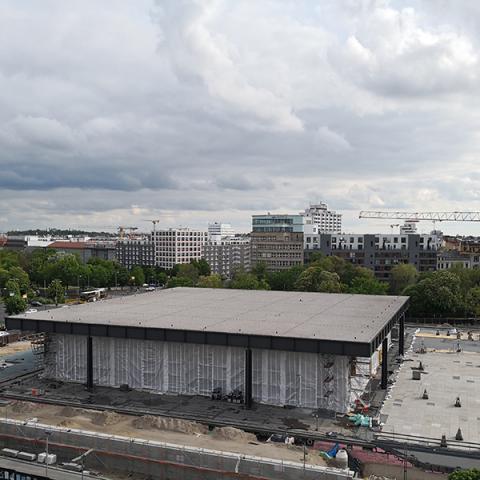articolo
Neue Nationalgalerie di Ludwig Mies van der Rohe a Berlino
Il testo descrive il restauro in corso curato da David Chipperfield Architects della Neue Nationalgalerie, ultima opera di Mies van der Rohe, e l’unica da lui realizzata in Germania nel dopoguerra su incarico diretto della municipalità di Berlino Ovest. L’obiettivo è di raggiungere la massima conservazione del tessuto esistente e la minore compromissione visiva nei confronti dell’aspetto originale della Neue Nationalgalerie, mediando tra le esigenze contemporanee di fruizione di un museo e le istanze del patrimonio imposte dal monumento tutelato. L’intervento si è basato soprattutto sulla ‘riparazione’ di materiali e componenti storici, al fine di conservarne la più alta percentuale possibile. Attraverso un immane, impegnativo e sistematico lavoro gli elementi dell’architettura sono stati mappati, catalogati, riparati, e messi in deposito in attesa di essere rimontati nella loro esatta posizione. Al contempo, il progetto ha previsto l’aggiornamento dei requisiti dell’edificio legati alle esigenze di benessere, sicurezza, fruibilità e accessibilità. Le sporadiche innovazioni, leggibili come elementi contemporanei, sono destinate ad essere distanti da ogni arbitraria reinterpretazione e subordinate al disegno originale.
The refurbishment of Ludwig Mies van der Rohe’s Neue Nationalgalerie in Berlin by David Chipperfield Architects
The paper describes the refurbishment of the Neue Nationalgalerie curated by David Chipperfield Architects. The building is Mies van der Rohe’s last work and the only one he realised in post-war Germany. The municipality of West Berlin had directly commissioned it to Mies. The aim of the work is the maximum conservation of the existing building fabric and the minor visual impairment of the Neue Nationalgalerie’s original appearance. Chipperfield mediates between today’s functional needs of a museum and the demands of historic preservation imposed by the protected monument. The restructuring mainly consists of the "repair" of historic materials and components in order to maintain them in the highest possible percentage. In a vast, demanding and systematic process, the architecture’s elements have been mapped, cataloged, repaired and placed in storage in order to be re-assembled in their exact position. At the same time, the intervention will update the building’s performance in order to meet today’s standards of well-being, safety, usability and accessibility. Building improvements, which may be necessary, will be readable as contemporary elements. Their design will not be driven by any arbitrary reinterpretation of Mies but will simply be subordinated to the original design.



